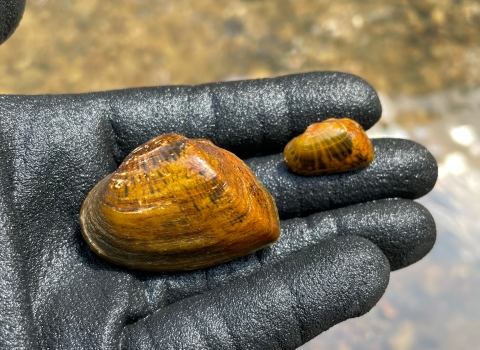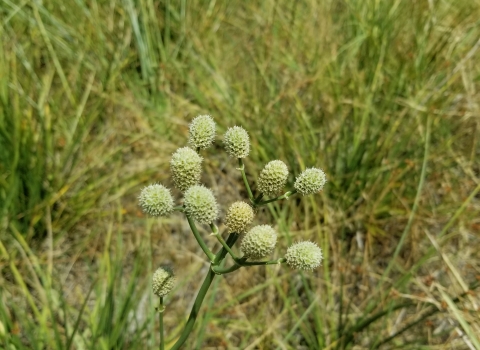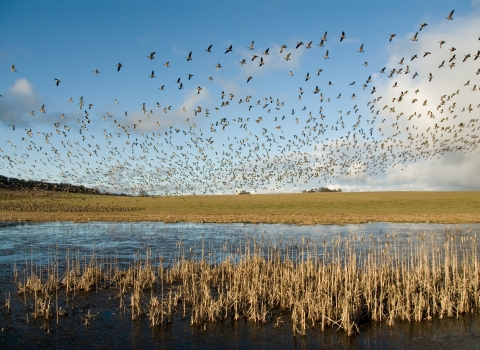As part of the process mandated by the Endangered Species Act (ESA), the U.S. Fish and Wildlife Service will conduct five-year status reviews of 59 endangered or threatened fish, wildlife, and plants.
The public is invited to provide information and comments concerning these species on or before August 5, 2024. However, the Service encourages the submission of new information on any species at any time.
These five-year reviews will ensure listing classifications under the ESA are accurate and will recommend any change in status, where appropriate, based on the latest science and analysis. In addition to reviewing the classification of these species, five-year reviews present an opportunity to track species’ recovery progress. These reviews may benefit species by providing valuable information to guide future conservation efforts.
Information gathered during a review can assist in making funding decisions, considerations related to reclassifying species status, conducting interagency consultations, making permitting decisions, and determining whether to update recovery plans, and other actions under the ESA.
The 59 endangered and threatened fish, wildlife, and plant species included in this announcement are:
Endangered fish and wildlife (25 species): Alabama lampmussel, Alabama sturgeon, armored marstonia (snail), barrens topminnow, birdwing pearlymussel, bluemask (=jewel) darter, Choctawhatchee beach mouse, Conasauga logperch, cracking pearlymussel, Cumberland bean (pearlymussel), Cumberlandian combshell, dromedary pearlymussel, fat pocketbook, Gulf moccasinshell, interrupted rocksnail, littlewing pearlymussel, Neosho mucket, Ochlockonee moccasinshell, oval pigtoe, royal marstonia (snail), rush darter, Saint Francis' satyr butterfly, shinyrayed pocketbook, slender campeloma, and St. Andrew beach mouse.
Endangered Plants (18 species): Beach jacquemontia, bunched arrowhead, Carter's mustard, Cooley's meadowrue, Florida torreya, Green pitcher-plant, Highlands scrub hypericum, Lakela's mint, palo de nigua, palo de Ramón, pygmy fringe-tree, rock gnome lichen, Schweinitz's sunflower, scrub mint, spreading avens, tiny polygala, Wheeler's peperomia, and whorled sunflower.
Threatened fish and wildlife (11 species): Arkansas fatmucket, bayou darter, Florida scrub-jay, noonday snail, purple bankclimber (mussel), rabbitsfoot, ringed map turtle, southeastern beach mouse, tulotoma snail, Waccamaw silverside, and yellowfin madtom.
Threatened Plants (five species): Heller's blazingstar, Kentucky glade cress, Kral's water-plantain, pigeon wings, and white birds-in-a-nest.
The five-year reviews seek information on: (1) species biology, including population trends, distribution, abundance, demographics, and genetics; (2) habitat conditions, including amount, distribution, and suitability; (3) conservation measures that have been implemented; (4) threat status and trends; and, (5) other new information, data, or corrections, including taxonomic or nomenclatural changes; identification of erroneous information contained in the ESA list; and improved analytical methods. In addition, the Service highly values any cultural knowledge that Tribal Nations are willing to share concerning any of these species, to inform and improve the Service’s decision-making processes.
The Federal Register notice announcing the status review of these 59 federally listed fish, wildlife and plants is available online at https://www.federalregister.gov/documents/2024/06/06/2024-12370/endangered-and-threatened-wildlife-and-plants-initiation-of-5-year-status-reviews-for-59
Comments and materials on any of the species listed above can be submitted to the appropriate contacts listed in the Federal Register notice. With these notices, we request that information be submitted within a certain timeframe in order to ensure that we receive it in time to consider the information in our review. However, the Service encourages the submission of new information on any species at any time.
For general information, contact Aaron Valenta, via phone at (404) 679–4144, via email at aaron_valenta@fws.gov, or via U.S. mail at U.S. Fish and Wildlife Service, 1875 Century Boulevard, Atlanta, GA 30345. Individuals in the United States who are deaf, deafblind, hard of hearing, or have a speech disability may dial 711 (TTY, TDD, or TeleBraille) to access telecommunications relay services. Individuals outside the United States should use the relay services offered within their country to make international calls to the point-of-contact in the United States.
The mission of the U.S. Fish and Wildlife Service is working with others to conserve, protect, and enhance fish, wildlife, plants, and their habitats for the continuing benefit of the American people. For more information on our work and the people who make it happen, visit https://www.fws.gov/program/southeast-region. Connect with us on social media: Facebook, X (formerly known as Twitter), Flickr, and YouTube.



